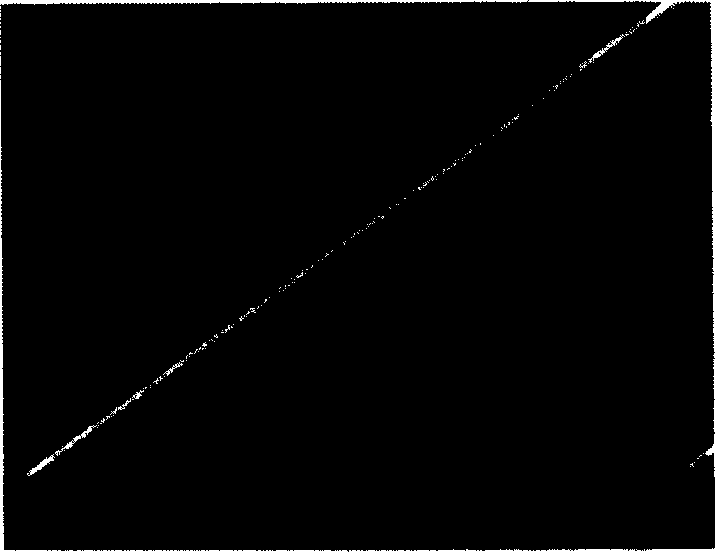Composite material fiber based on carbon nano-tube and its preparation method
A composite material fiber, carbon nanotube technology, applied in the direction of fiber chemical characteristics, single-component synthetic polymer rayon, textiles and papermaking, etc. Peeling and other problems to achieve the effect of improving mechanical properties and increasing electrical conductivity
- Summary
- Abstract
- Description
- Claims
- Application Information
AI Technical Summary
Problems solved by technology
Method used
Image
Examples
Embodiment 1
[0030] ① ultrasonicating the carbon nanotubes in a mixed acid of concentrated sulfuric acid and concentrated nitric acid with a volume ratio of 3:1 for 4 hours, and obtaining purified carbon nanotubes after cleaning, filtering and drying;
[0031] ②Put it into an aqueous solution of gum arabic containing 3% by weight, let it stand for 6 hours, dry and grind to obtain modified carbon nanotubes;
[0032] ③ the modified carbon nanotubes 0.15g and 48g acrylonitrile, 3.6g methyl acrylate, 0.67g itaconic acid, 0.15g azobisisobutyronitrile, 1.5g isopropanol, 290g 51% by weight sulfur The sodium cyanate aqueous solution is polymerized in a polymerization kettle, wherein the polymerization temperature is 78° C., and the polymerization time is 1 hour to prepare a composite material stock solution;
[0033] ④The stock solution is prepared by solution spinning to obtain a composite material fiber containing 0.2% carbon nanotubes by weight, wherein the spinning temperature is 60°C, the dia...
Embodiment 2
[0036] ① Ultrasound the carbon nanotubes in a mixed acid of concentrated sulfuric acid and concentrated nitric acid with a volume ratio of 3:1 for 8 hours, and obtain purified carbon nanotubes after cleaning, filtering and drying;
[0037] ②Put it into an aqueous solution of sodium alkyl sulfate containing 10% by weight, let it stand for 4 hours, dry, and grind to obtain modified carbon nanotubes;
[0038] ③The modified carbon nanotubes 0.6g and 40g acrylonitrile, 3.6g methyl acrylate, 0.20g azobisisobutyronitrile, 1.5g isopropanol, and 100g dimethyl sulfoxide were polymerized in a polymerization tank, wherein The polymerization temperature is 70°C, the polymerization time is 2 hours, and the composite stock solution is prepared;
[0039] ④ The stock solution is prepared by solution spinning to obtain a composite material fiber containing 2% carbon nanotubes by weight, wherein the spinning temperature is 80 ° C, the diameter of the spinneret hole is 0.15 mm, the coagulation ba...
PUM
| Property | Measurement | Unit |
|---|---|---|
| diameter | aaaaa | aaaaa |
| length | aaaaa | aaaaa |
| electrical resistivity | aaaaa | aaaaa |
Abstract
Description
Claims
Application Information
 Login to View More
Login to View More - R&D
- Intellectual Property
- Life Sciences
- Materials
- Tech Scout
- Unparalleled Data Quality
- Higher Quality Content
- 60% Fewer Hallucinations
Browse by: Latest US Patents, China's latest patents, Technical Efficacy Thesaurus, Application Domain, Technology Topic, Popular Technical Reports.
© 2025 PatSnap. All rights reserved.Legal|Privacy policy|Modern Slavery Act Transparency Statement|Sitemap|About US| Contact US: help@patsnap.com



